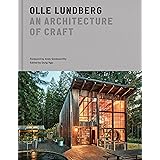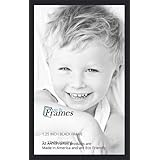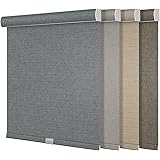The kitchen, often called the heart of the home, is more than just a place for cooking; it’s a central gathering space that significantly influences a home’s overall aesthetic and perceived value. Many homeowners aspire to create a space that feels luxurious and thoughtfully designed without necessarily undertaking a complete overhaul. As discussed in the insightful video above, there are numerous strategic approaches to enhance your kitchen’s appeal, transforming it into an area that exudes elegance and sophistication.
Achieving an expensive look in your kitchen involves a blend of smart design choices, functional upgrades, and an keen eye for detail. This goes beyond mere aesthetics; it’s about creating an atmosphere that feels intentional and polished. By focusing on key elements, it is possible to significantly elevate your kitchen’s design, making it a standout feature of your home.
Transforming Your Floors with Strategic Runner Placement
One of the simplest yet most impactful changes you can implement in an existing kitchen is re-evaluating your floor coverings. Individual floor mats, while practical, often break up the visual flow of a space, making it appear disjointed and less sophisticated. This design choice can inadvertently cheapen the overall look of your kitchen, drawing attention to individual segments rather than the cohesive whole.
Opting for long runners instead of multiple small mats provides an immediate visual upgrade. A continuous runner spans a greater length of your floor space, creating an illusion of expanded room dimensions. This uninterrupted line guides the eye, contributing to a sense of spaciousness and deliberate design. Furthermore, runners offer an excellent opportunity to introduce accent colors, intricate patterns, or rich textures, thereby adding character and warmth to typically hard surfaces. High-quality, washable runners are widely available, proving that practicality and elegant style can coexist beautifully in a busy kitchen environment.
Elevating Countertop Aesthetics with Cohesive Essentials
The items persistently displayed on your kitchen countertops—the functional pieces you use every day—play a crucial role in defining the space’s overall visual harmony. Many kitchens suffer from a cluttered appearance due to mismatched utilitarian items, which detract from an otherwise well-designed interior. Integrating these essentials into your kitchen’s color scheme and style is a fundamental step toward achieving a more expensive look.
Consider replacing brightly packaged items with stylish canisters made from complementary materials like ceramic, glass, or wood. Decanting coffee, tea, and other staples into these containers instantly tidies the appearance and adds a layer of curated detail. Similarly, upgrading everyday items such as soap dispensers, spoon rests, and kitchen towels to neutral tones or materials that align with your overall design creates a cohesive and intentional presentation. Functional elements like cutting boards, when selected for their material quality and aesthetic appeal, can double as decorative accents, adding warmth and visual interest to your countertops. This deliberate approach ensures that even your most practical items contribute positively to the kitchen’s sophisticated ambiance, making the space feel organized and meticulously maintained.
The Refined Choice: Honed Countertop Finishes
When selecting new countertops, the surface finish is a critical decision that profoundly affects the perception of luxury and timelessness. While polished, glossy finishes have traditionally been popular, they are often prone to revealing every smudge, fingerprint, and crumb, demanding constant maintenance to maintain a pristine appearance. This high-sheen surface can sometimes lend a manufactured or less natural feel to the stone, diminishing its inherent elegance.
A honed finish, conversely, presents a matte, velvety, or leathered look that significantly elevates the kitchen’s sophisticated aesthetic. This non-reflective surface naturally conceals minor imperfections, making it more forgiving in a high-traffic area. Beyond its practical benefits, a honed finish offers a tactile experience and visual depth that polished surfaces simply cannot match. It allows the natural beauty and veining of the stone to emerge without the distraction of glare, imparting a more organic and authentic feel. Interior designers frequently advocate for honed finishes due to their timeless appeal and ability to contribute to an understated, high-end look that resonates with contemporary design trends. A recent study indicated that matte finishes are increasingly favored by homeowners seeking both durability and a luxurious, non-flashy appearance in their kitchens.
Mastering Kitchen Illumination: Integrated, Task, and Mood Lighting
Effective lighting design is a cornerstone of an elevated kitchen, moving beyond mere functionality to create layers of ambiance and highlight architectural features. A truly luxurious kitchen incorporates at least three distinct types of lighting: integrated, task, and mood lighting, each serving a unique purpose to enhance both utility and atmosphere.
-
Integrated Lighting for Seamless Design
Integrated lighting is designed to blend seamlessly with your kitchen’s architecture, providing subtle illumination that enhances functionality without being overtly visible. Under-cabinet lighting, for instance, illuminates your countertops, making food preparation safer and more enjoyable while also highlighting your backsplash. Beyond this, consider toe-kick lighting for a sophisticated glow at floor level or in-cabinet lighting, particularly for glass-fronted cabinets, to showcase dinnerware or decorative items. Motion-sensored strip lighting, easily installed even in existing kitchens, offers convenience and an instant touch of modern luxury, making it simple to find items in a pantry or drawer.
-
Task Lighting for Optimal Functionality
Task lighting is essential for practical activities, ensuring adequate illumination for cooking, cleaning, and meal preparation. This category typically includes overhead ceiling lights, often recessed for a clean look, and pendant lights positioned strategically over islands or dining areas. These fixtures provide direct, focused light exactly where it is needed, preventing shadows and making detailed work easier. Selecting fixtures that complement your kitchen’s style can also turn task lighting into a powerful design statement.
-
Mood Lighting for Ambiance and Comfort
Mood lighting is perhaps the most crucial element in transforming your kitchen into a welcoming and relaxing space, particularly during evenings or when entertaining. Unlike bright task lighting, mood lighting provides a soft, warm glow that encourages relaxation and conversation. Small lamps strategically placed in corners, decorative sconces on walls, or even picture lights highlighting artwork can introduce this inviting ambiance. These softer light sources diminish harsh shadows and create a cozy, intimate environment, proving that the kitchen can be as comfortable and inviting as a living room. This multi-layered approach to lighting ensures your kitchen is not only functional but also adaptable to various needs and moods, contributing significantly to its perceived luxury.
Strategic Cabinetry: Reaching New Heights and Appliance Integration
Cabinetry is arguably the most dominant visual element in any kitchen, and thoughtful design choices here can dramatically influence the perception of space and luxury. Two specific cabinet configurations are hallmarks of a high-end, designer kitchen: cabinets extended to the ceiling and integrated countertop cabinets with appliance garages.
-
Floor-to-Ceiling Cabinets for Expanded Volume
Extending upper cabinets all the way to the ceiling eliminates the dust-collecting gap often seen in standard kitchens, which can make a space feel unfinished and less refined. This continuous vertical line not only provides valuable additional storage but also draws the eye upwards, creating an illusion of heightened ceilings and a significantly larger kitchen. Whether implemented as large, unified doors or broken into smaller, stacked units on top, this design choice imparts a sense of grandeur and bespoke craftsmanship. Homeowners often find this design maximizes storage efficiency, which is a key priority in modern kitchen planning.
-
Countertop Cabinets and Hidden Appliance Garages
Countertop cabinets, often referred to as cabinet towers, extend from the ceiling directly down to the countertop, offering both a unique design element and practical benefits. These create varying depths in your cabinetry, breaking up the linear monotony of traditional upper and lower units and adding architectural interest. Crucially, these towers are ideal for incorporating appliance garages. An appliance garage is a dedicated cabinet space, typically with a retractable door, designed to house small appliances like toasters, blenders, or coffee makers when not in use. This ingenious solution instantly declutters countertops, maintaining a sleek and organized appearance with minimal effort. The clean lines and hidden functionality contribute immensely to an elevated and expensive kitchen aesthetic, making it a highly sought-after feature in contemporary kitchen designs.
The Art of Discretion: Integrating Panel-Ready Appliances
In the pursuit of a truly luxurious and cohesive kitchen, the integration of appliances plays a pivotal role. High-end custom kitchens typically feature only the oven as a visible appliance, with all other functional elements artfully concealed. This design philosophy emphasizes seamlessness, allowing the cabinetry and material choices to take center stage, rather than being interrupted by the visual bulk of standard appliances.
Achieving this sophisticated look often involves selecting panel-ready refrigerators and dishwashers. These specialized appliances are designed to accept custom cabinet fronts, allowing them to blend invisibly with your existing cabinetry. The result is a unified wall of cabinetry that creates a clean, uninterrupted visual flow throughout the kitchen, making the space feel larger and more bespoke. While the initial investment for panel-ready appliances can be higher, they offer remarkable design flexibility. Homeowners gain the ability to change cabinet door styles or colors in the future, updating the kitchen’s aesthetic without needing to replace perfectly functional appliances. This foresight in design contributes significantly to the longevity and enduring elegance of the kitchen, proving a worthwhile investment for those prioritizing a timeless and expensive appearance.
Backsplash as a Statement: The Elegance of a Slab Splash
The backsplash serves as a significant focal point in any kitchen, positioned at eye level where it immediately captures attention. While a plethora of individual tile options exists, many can introduce visual clutter or quickly become dated. A strategic choice in backsplash material can either elevate or detract from the overall kitchen design, making this decision paramount in achieving a luxurious feel.
For a timeless, clean, and unequivocally expensive aesthetic, a slab splash is an exceptional choice. This involves extending the countertop material—be it natural stone, quartz, or another solid surface—directly up the wall to serve as the backsplash. The continuous, uninterrupted surface creates a powerful visual statement, offering a streamlined and simplified look that many contemporary designers prefer. A slab splash draws the eye horizontally, enhancing the perception of width and grandeur, which can be particularly beneficial in smaller kitchens. This unified application of material minimizes grout lines, contributing to a hygienic surface that is easy to clean and maintain. Unlike trendy individual tiles that might require frequent updates, a slab splash offers a classic elegance that endures, underscoring a commitment to sophisticated and lasting design.
Beyond Function: Decorating Your Kitchen with Intent
Traditionally viewed primarily as a functional space, the modern kitchen is increasingly recognized as an integral part of the home’s decorative narrative. To make a kitchen truly look expensive, it must be treated with the same intentionality and stylistic flair as any other living area. Introducing decorative elements and soft furnishings can dramatically soften hard surfaces and infuse the space with warmth, personality, and an inviting ambiance.
Consider integrating artwork into your kitchen design. A beautifully framed piece leaned against the backsplash, hung above a shelf, or illuminated by a picture light creates an unexpected and sophisticated focal point. Window treatments, such as elegant Roman shades or delicate cafe curtains, add a layer of texture and softness, complementing cabinetry and countertops. Styling vignettes with curated objects—think a sculptural vase with fresh flowers, a collection of unique serving pieces on a decorative tray, or thoughtfully arranged cookbooks—transforms mundane surfaces into visually engaging displays. These deliberate touches, which might typically be reserved for living rooms or bedrooms, imbue the kitchen with a sense of coziness and completeness, reflecting a home that is both beautiful and well-loved. This holistic approach to decoration is vital for achieving an overall luxurious kitchen aesthetic.
Embracing Bold Finishes for Unforgettable Kitchens
While timeless and safe finishes are generally recommended for longevity in kitchen design, sometimes an elevated and truly expensive look can be achieved through deliberate, bold statements. This approach is not for everyone, but for those with a strong design vision, it offers an opportunity to create a kitchen that is distinctly unique and impactful. A bold choice transcends the ordinary, signaling a confident and sophisticated approach to interior design.
Consider a moody or vibrant cabinet color, such as deep charcoal, forest green, or even a striking navy blue. These rich hues can transform the kitchen’s character, moving it away from a builder-grade appearance towards a bespoke, designer feel. An interesting, highly patterned natural stone for the countertops or backsplash can serve as the kitchen’s primary art piece, captivating attention and demonstrating a flair for dramatic elegance. Similarly, selecting a unique, sculptural lighting fixture or an unusual flooring material can introduce an unexpected element of luxury. These bold decisions, when executed thoughtfully and in harmony with the rest of the home’s design, result in a kitchen that is not just functional but a true showstopper, leaving a lasting impression of high-end design and individuality.











